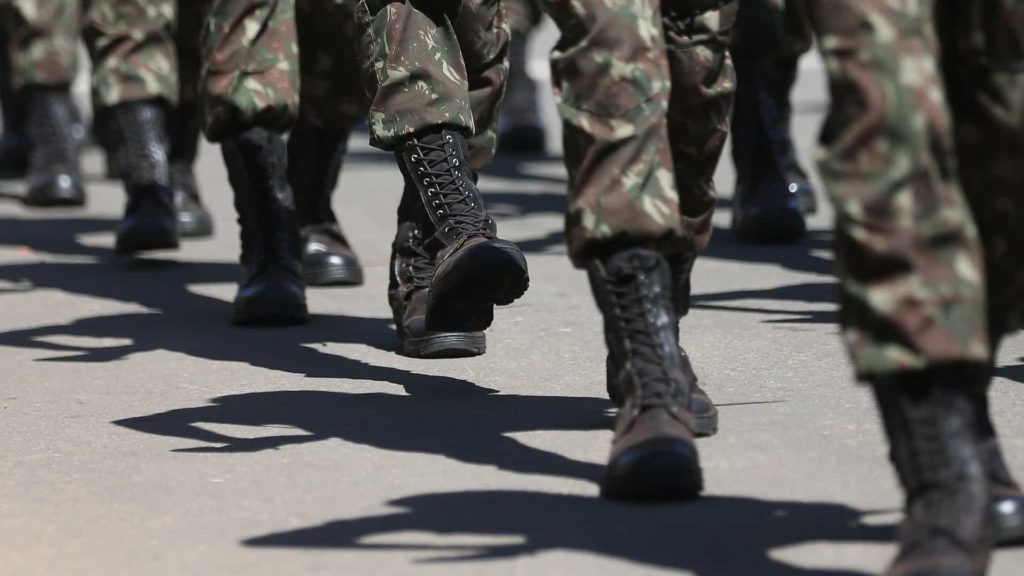RIO DE JANEIRO, BRAZIL – China‘s presence in South America, a recurring concern of the United States, has officially entered the Brazilian military radar, including the possibility of an armed confrontation in the region.

The updates of the PDN (National Defense Policy) and END (National Defense Strategy) texts, which will be sent to Congress on July 22nd, point to special concern for the so-called “exotic players” in the continent.
The Chinese have already invested US$180 billion (R$920 billion) in infrastructure programs in countries in the region – many in the south of the continent – according to the US Armed Forces Southern Command. They have extended the strategic Chinese Belt and Road program into the 31 Latin American nations.
According to the commander-in-chief, Admiral Craig Faller, China has set up an “economic trap” for impoverished Latin American countries.
As in previous versions, the Amazon is considered a target of external greed. A preliminary document on defense scenarios through 2040 showed that France was perceived as the greatest strategic threat to the country.
The European country is at the forefront of criticism of the Bolsonaro government’s environmental policy and physically borders the region through French Guyana overseas territory – which does not turn it into an “exotic player”. Parisian diplomacy has considered the possibility of a frenzied confrontation.
As a formal document, the combined PDN/END reports do not name threats, they only outline goals and how to achieve them with the available resources, which are inventoried in a third document now being updated, the White Paper on National Defense.
The first PDN dates to 1996, and has had three updates through 2016. The END had editions in 2008, 2012 and 2016. The White Paper will have its first revision since 2012.
Therefore, geopolitical changes are expected, albeit nothing too radical. Bolsonaro’s disregard for multilateral institutions, for one, is not reflected in the text: the United Nations, for instance, does not figure as the globalist villain portrayed by the current Foreign Ministry (Itamaraty).
On the other hand, there are realities: the Union of South American Nations and the South American Defense Council, bodies founded by the left-wing governments that ruled the continent in the years 2000-10, have now disappeared in practice.
Consequently, they are no longer recommended as a forum for integration in the current PND/END version, as they were in the past under Workers’ Party (PT) governments.
According to people involved in the drafting of the document, which is still being revised and has no final version ready, Brazil’s alignment with the USA, advocated by Bolsonaro, is not reflected in the texts.
The Brazilian position of refusing to adhere to additional protocols of the Nuclear Non-Proliferation Treaty, something that the Americans would like to see signed, should be maintained in the update.
Last year, Brazil became a preferential ally of the Americans outside the scope of NATO (Western military alliance) and signed a significant technological cooperation agreement in the sector. But, in practice, nothing has happened yet.
Other than Beijing, Moscow is also drawing the attention of Brazil’s Armed Forces because of its explicit support for the dictatorship of Nicolás Maduro in Venezuela. But in the exclusively military camp, in terms of being “exotic players”, the Russians have nothing like China’s economic weight.
This is why, obviously without names, there is concern about the country north of the Brazilian border. In the past, the document did not envisage any risk of conflict in the region, but the concern is now there.
Last year, the US coordinated its reactions to the Venezuelan crisis with Brazil and Colombia, and at some point the Brazilian military was forced to intervene to prevent Itamaraty’s temptations to clash with Maduro. However, the tension remains, despite the fact that the dictator has relatively stabilized his power.
The strategic environment includes the South Atlantic, an area where Brazil aims at military reinforcement with the planned construction of new light frigates.
Here the concern is the same as in earlier versions of the documents: denying access to enemies who might blockade the country, and monitoring suspicious maritime behavior.
The text calls for budgetary regularity for military programs – many of them linked to international commitments, as in the case of the Swedish Gripen fighter or the French Scorpène submarines.
The Ministry of Defense asks for two percent of Gross Domestic Product for fixed defense spending, as education (18 percent) and health (15 percent) are enshrined in the Constitution.
This percentage is the NATO (Western military alliance) stated goal, currently reached only by seven of the group’s 29 members, which has led to tension with the majority partner, the United States.
Today, Brazil spends about 1.3 percent of its GDP on defense. In 2019, of the R$109.9 billion earmarked for the sector, R$80 billion was spent on personnel, and R$47.7 billion on inactive personnel (reservists and pensioners). The current NATO target budget does not include inactive personnel.
The country holds the 11th largest military budget in the world, according to the London International Institute for Strategic Studies. But the imbalance in spending means that little is invested. Fernando Azevedo, the Minister of Defense, said last week that the three Armed Forces are operationally out of step, despite ongoing programs.
On the other hand, the military sector was the one that most increased spending among the Ministries in 2019, in addition to ensuring the execution of its budget. The crisis resulting from the pandemic now places this trajectory in doubt.
Source: Folhapress

